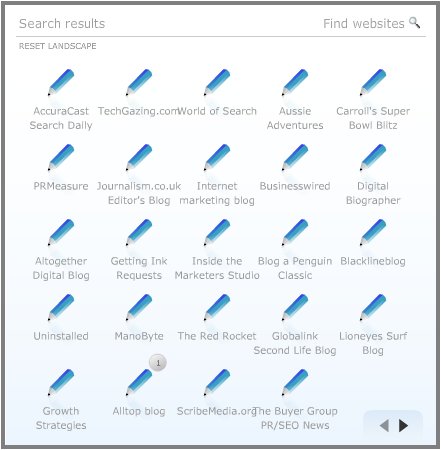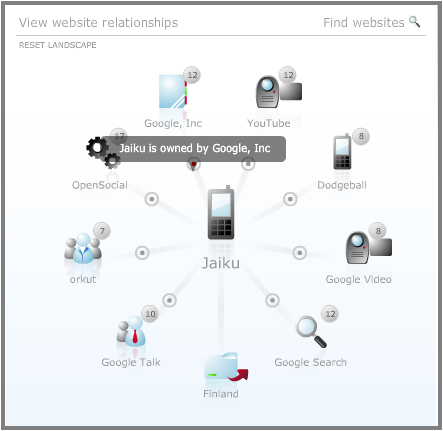SMP » About
Blogs
Social Media Portal Landscape - Blogs
Background
Blogs found their
beginnings in 1994, when they took the form of online diaries that were updated

manually on a standard website. It?s widely accepted that the first blogs in existence were written by Justin Hall, a university student and Jerry Pournelle, popular journalist and science fiction writer. It wasn?t until 1997 that this new type of website got its own name, being referred to as a ?weblog? by the editor of
Robot Wisdom website Jorn Barger.
From weblog, it was shortened to ?we blog? and then to ?blog? two years later in 1999 by Evan Williams of
Pyra Labs, who also
coined the term ?blogger? after Pyra Lab?s blogging software Blogger. Blogger remains today as one of the most popular blog publishing tools available, and was bought by search monolith Google in 2003.
Today
A blog as we know it today is a
dynamic website (or online journal) fashioned in reverse chronological order. The act of keeping and updating a blog is called ?blogging? and the owner of the blog is a ?blogger.? What sets a blog apart from a standard website is that it
engages with readers and the wider blogging community (commonly referred to as the ?blogosphere?) by being personal, and having a voice of its own and is often times opinionated. The sense of community that revolves around a blog is strengthened by readers and other bloggers who are able to become
part of the conversation; the ultimate goal of a blogger being reader engagement. Blogs can be set up relatively easily by people with little to no
technical know-how through popular blog publishing companies such as Blogger, WordPress and TypePad among others.

Standard features of blogs include the ability to add
links, rich content such as
photos and
videos, categorised blog entries (by tags, date etc.),
timestamps, user
comments, a
blogroll (a list of blogs the owner recommends),
trackbacks (automatically generated comment when somebody links back to a blog entry) and
RSS feeds (Real Simple Syndication is a real-time feed that allows readers to be automatically updated of a new blog post).
Managed either by a group, individual or company, blogs are primarily written in commentary style about a particular subject, such as an individual?s life or a company, or follow a theme, such as politics, travel or social media. Whilst most blogs are written and often
include supplementary content, others can be formed solely of other content such as audio, video (a vlog) or photographs. Another form of blogging is
?micro-blogging? or ?moblogging? which means to write a blog in short text (or SMS [short message service]) format through a mobile device, and often through a platform such as
Twitter or
Jaiku (see image left).
Mainstream
Blogging started to become popular with the launch of
free blogging software mentioned above. However it wasn?t until 2002 that it started to reach
mainstream popularity, which even saw traditional news outlets such as The Guardian start blogging. If 2002 was the year of the blog, then 2009 is the year of micro-blogging, more specifically the year of Twitter which has reportedly grown by over
1000 per cent in the last 12 months.
Popular blog search engine Technorati currently tracks almost
113 million blogs and according to their data, over 175,000 new blogs are created every day. At the time of writing, some of the world?s most popular blogs include technology blogs Mashable and TechCrunch, celebrity gossip blogs Perez Hilton and TMZ and gadget blogs Gizmodo and engadget.
The benefits of adding your blog to SMP
- Let more of your audience know about your blog and drive traffic to it
- Find similar blogs that you may have an interest in
- Attract advertisers, marketers and brand managers that need to reach your audience
- Link your blog listing to other social media Landscapes and subject matter e.g. the technology provider that powers your blog
- Differentiate your approach, products, service and/or technology from your competitors
- Update your target audiences with case studies, events, press releases and/or whitepapers that may relate to your blog
- Submit news scoops through SMP to be considered for social media news
- Share your expertise through opinion and thought leadership articles published on the SMP site reaching your audiences
- List other assets of your blog that relate to the social media Landscape and demonstrate the other relationships that it has
Do you have a blog?
Become part of the SMP Landscape by
adding your blog